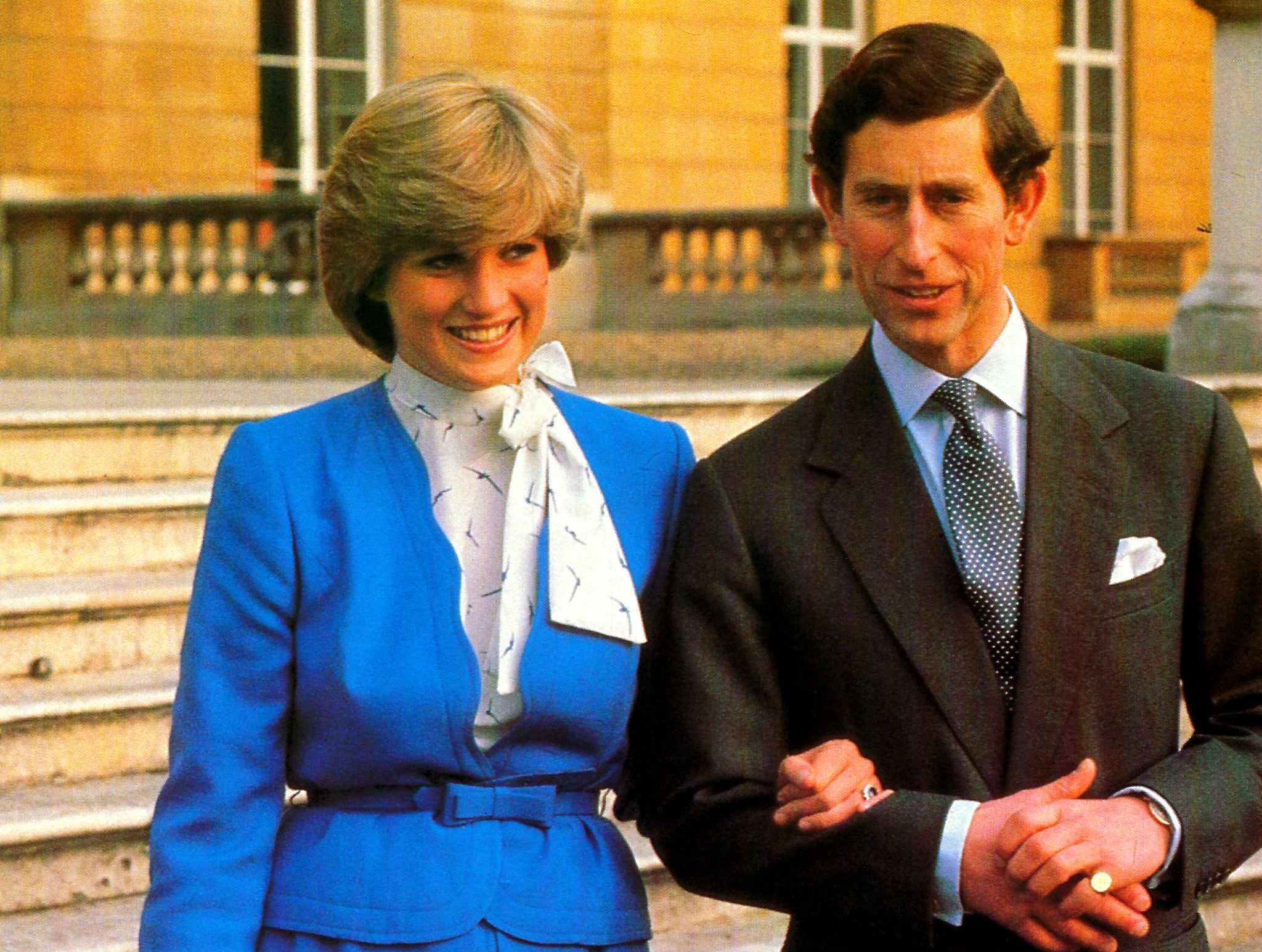Antony and Cleopatra - Elizabeth Taylor and Richard Burton
Antony and Cleopatra, portrayed by Elizabeth Taylor and Richard Burton in the legendary Hollywood production, were in Budapest for about three months in 1972. The two actors formed a real-life couple for a long time. Their relationship was rather stormy, they even divorced once and then remarried. Burton was the actress's fifth and sixth husband, followed by two others. The beautiful and talented Taylor was only accompanying Burton to Budapest, where the actor was filming Bluebeard, playing the titular role.
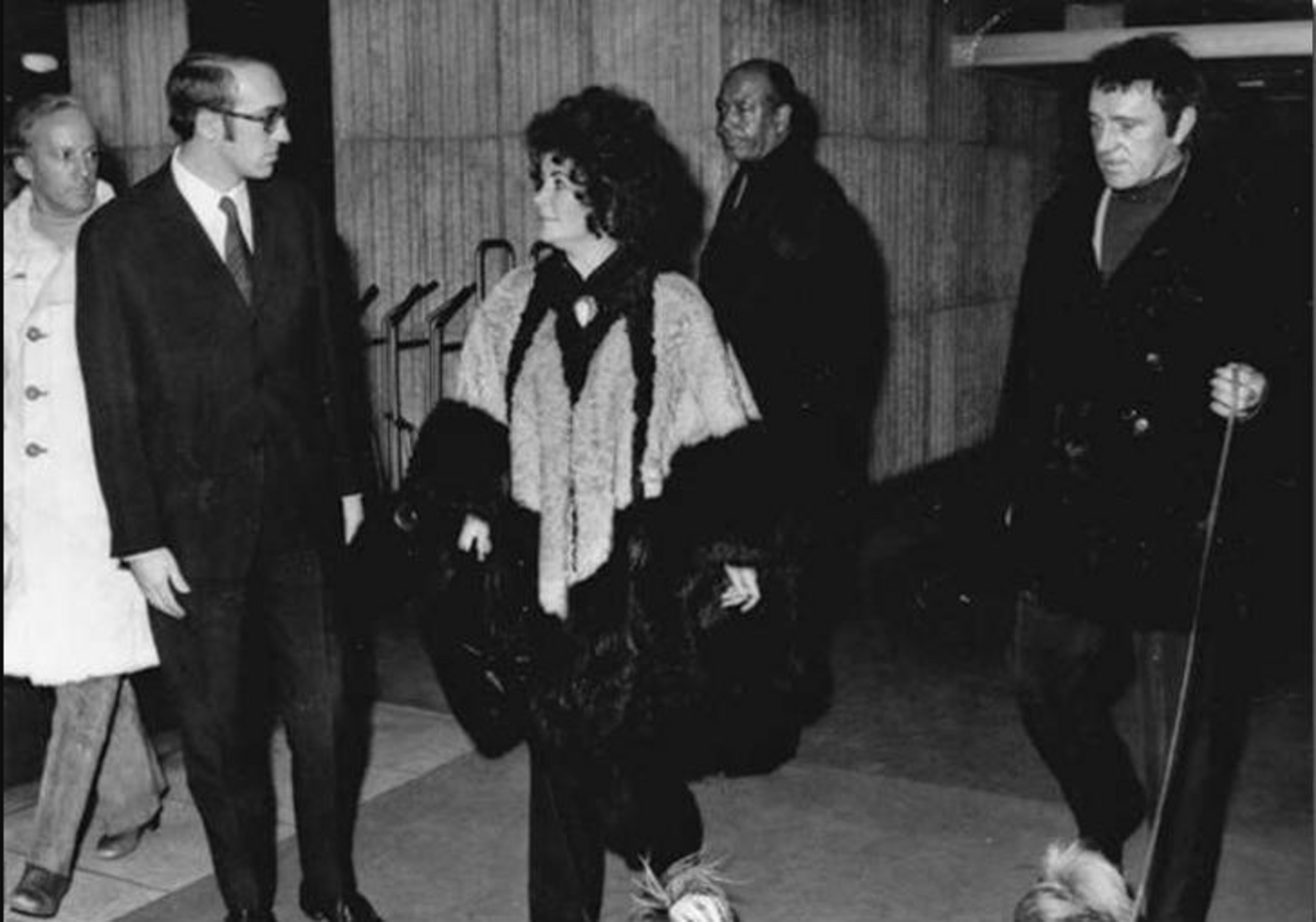
The couple stayed in the InterContinental Presidential Suite (InterContinental Budapest was a state-of-the-art hotel back then), and their arrival heralded a new quality of high life. Unusual questions were raised, such as where to buy large quantities of Dom Pérignon champagne in socialist Hungary, or whether the Buda Castle could be lit up a little more atmospherically to please the actress. Elizabeth Taylor, by the way, had turned 40 in Budapest, and getting snow-white balloons and Dutch tulips to match her dress was another major challenge for the hotel's helpful staff. The actress, who was also known for her jewellery collection, was of course presented with a huge diamond by her husband, and the birthday party was attended by some of the biggest stars. Interestingly, the guests included another famous couple, Rainier III, Prince of Monaco and his wife, Grace Kelly.
The Queen of Hearts - Princess Diana and (formerly) Prince Charles
The break-up of the marriage between Charles III, formerly Prince Charles, and Princess Diana was watched from an armchair by the whole world. But the backdrop to this sad story was Budapest for a few days when the royal couple visited Hungary, which had recently become a democracy, in May 1990. Everyone was well prepared for the reception, except Árpád Göncz. As the freshly elected interim president of the republic, he had to welcome no other than the heir to a dynasty that had ruled for centuries. Göncz, who spoke excellent English, handled the situation well. He received the party at the airport and modestly remarked that he was worried he had made a mistake in the protocol. "Your family has been doing this for a thousand years, I've been doing it for three days," he reportedly apologised to Prince Charles. The Prince and Princess were sleeping in separate rooms by then, but they fulfilled their prescribed obligations to the maximum, attending a banquet at the Parliament, visiting the Holy Crown of Hungary and the Fisherman's Bastion, enjoying the view from tram 2 and, of course, purchasing the indispensable onion and paprika garlands at the Great Market Hall.
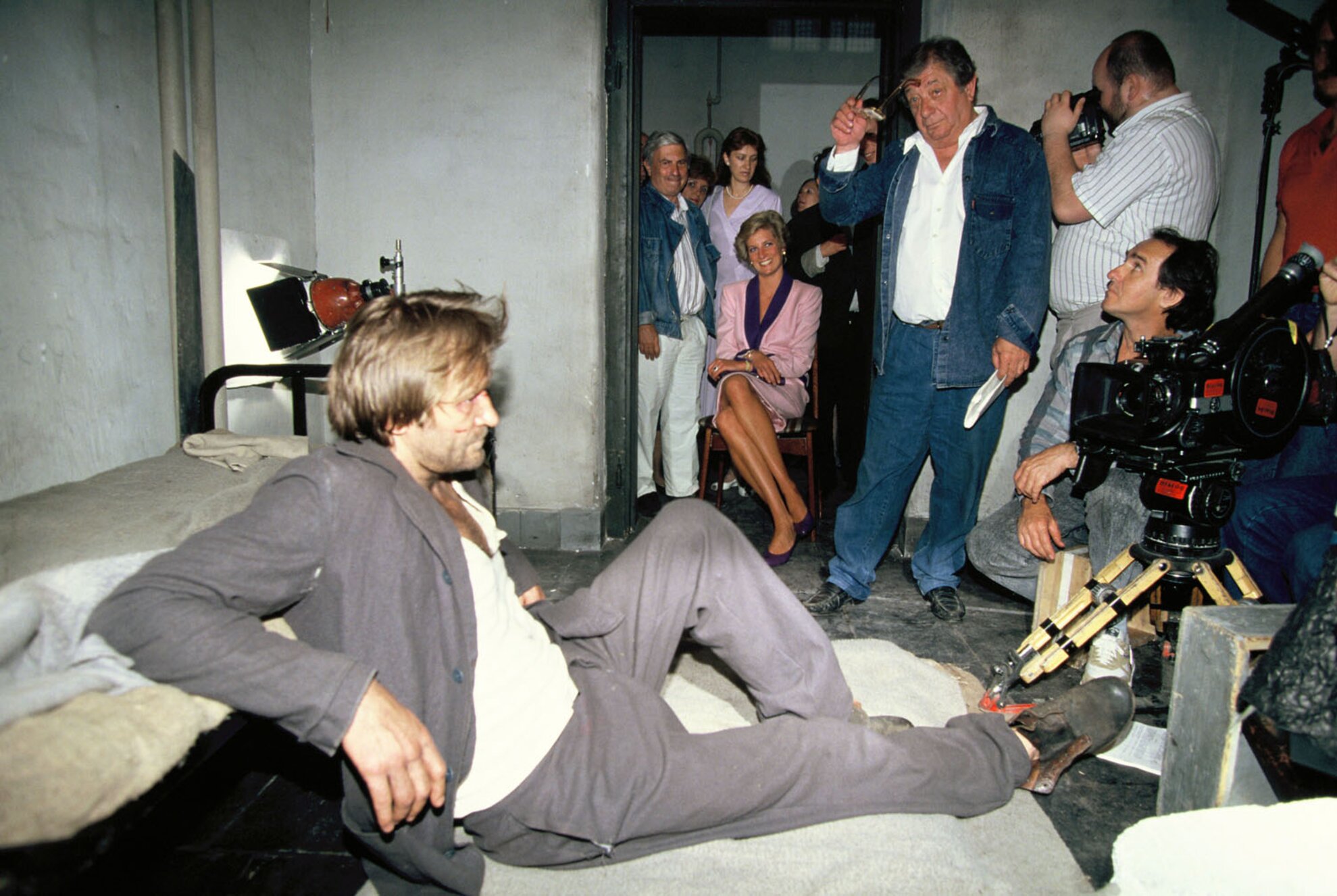
It was during their stay here that the couple became acquainted with the works of sculptor László Marton, whose exhibition they visited in England later. The people of Budapest found Diana charming, modest, and interested in others, while her appearance and her beautiful outfits brought the promise of a better world to the capital during the regime change. Diana also visited a movie set in the Mafilm film studio, a photo captured her looking at the young and very handsome György Cserhalmi at work, in an elegant outfit next to a prison scene. This was the only time the royal couple visited us together, but Diana returned to the Hungarian capital two years later, and Charles III later enjoyed our hospitality with his second wife, Camilla, as well.
The Queen and her faithful companion - Elizabeth II and Prince Philip
It might be unusual to regard the recently deceased Elizabeth II and her husband Prince Philip as lovers since we rarely associate emotions with national symbols. However, it is well known that their marriage was based on sincere affection and they stuck together for a lifetime, while fate wasn't easy on them. Elizabeth II is said to have visited Budapest partly on the advice of Prince Philip, who had been to Hungary several times before on his own, and was particularly fascinated by its equestrian past. The royal couple was received at Ferihegy Airport by Minister of Foreign Affairs Géza Jeszenszky, but of course, they also met Árpád Göncz, who had been on an official visit to England the previous year and who grew more experienced since Lady Diana's visit.
The Queen has a Hungarian ancestor, Countess Claudine Rhédey, whom she commemorated in her speech in the Parliament. She was also fascinated by the exhibition in her honour at the National Széchényi Library. According to some sources, the couple stayed at the Hilton and were accompanied by a hairdresser and a butler on the trip. Their programme included a cruise and a short visit to the village of Bugac. The monarch was given a taste of the famous Hungarian hospitality while being treated to a feast of pogácsa (Hungarian salted scones), white wine, and other delicacies. The lunch in their honour at the Gundel Restaurant must have been an exceptional feast as well, the menu of which can be read in detail in a former article in the newspaper Pesti Hírlap:
Salmon with Hungarian asparagus was served first, followed by pigeon essence. The main course was veal fricandeau, accompanied by paper-thin potato crowns, stuffed with Hungarian wild rice and morel mushrooms stuffed with goose liver. The dessert was also a crown baked from thin, crispy pastry and decorated with real strawberries as well as ones shaped from parfait. The ingredients for the dishes were grown on Hungarian soil, similar to the Tokaj and Eger wines offered to the couple.
Nothing was overlooked at Gundel, the theme that united the dishes was the crown, which appeared in every dish, and special care was taken to use local ingredients wherever possible. A real speciality was the Hungarian dessert wine Tokaj aszú, made in 1952, the year the Queen came to the throne. Ten tasting menus preceded the catering, and the restaurant staff was specially trained to serve the special guests.
The rulers of the Monarchy - Sisi and Franz Joseph
Franz Joseph and Empress Elisabeth, or Sisi, were initially in true love, although their relationship soon crumbled under the weight of the Monarchy. The young Empress, a true rebel, found it difficult to cope with the strict court atmosphere, but it was her free spirit and beauty that made her a suitable patron for the Hungarian public after the Revolution of 1848. Sissi herself could sense this spiritual affinity, she loved Hungary very much, stayed here several times, and Gyula Andrássy, later Foreign Minister of the Monarchy, was her personal friend. Several films have been made on the life of the Empress, the best known being a three-part series, in which Sisi is seen managing the affairs of the empire in magnificent dresses. Below you can watch a not-even remotely factual summary of the coronation.
The imperial couple visited Budapest on several occasions, both separately and together. The first occasion occurred in 1857, eight years after the defeat of the War of Independence, with the undisguised aim of demonstrating the post-Haynau détente. Special security measures were put in place for the couple's arrival, but the news of them were also strictly controlled in the press, the official correspondent being Miksa Falk. Fears were justified when poet János Arany, who had been invited to greet the Emperor, declined the opportunity on the grounds of illness and went on to write The Bards of Wales, featuring the tyrannical King Edward. The work, of course, lay in a drawer for a long time.
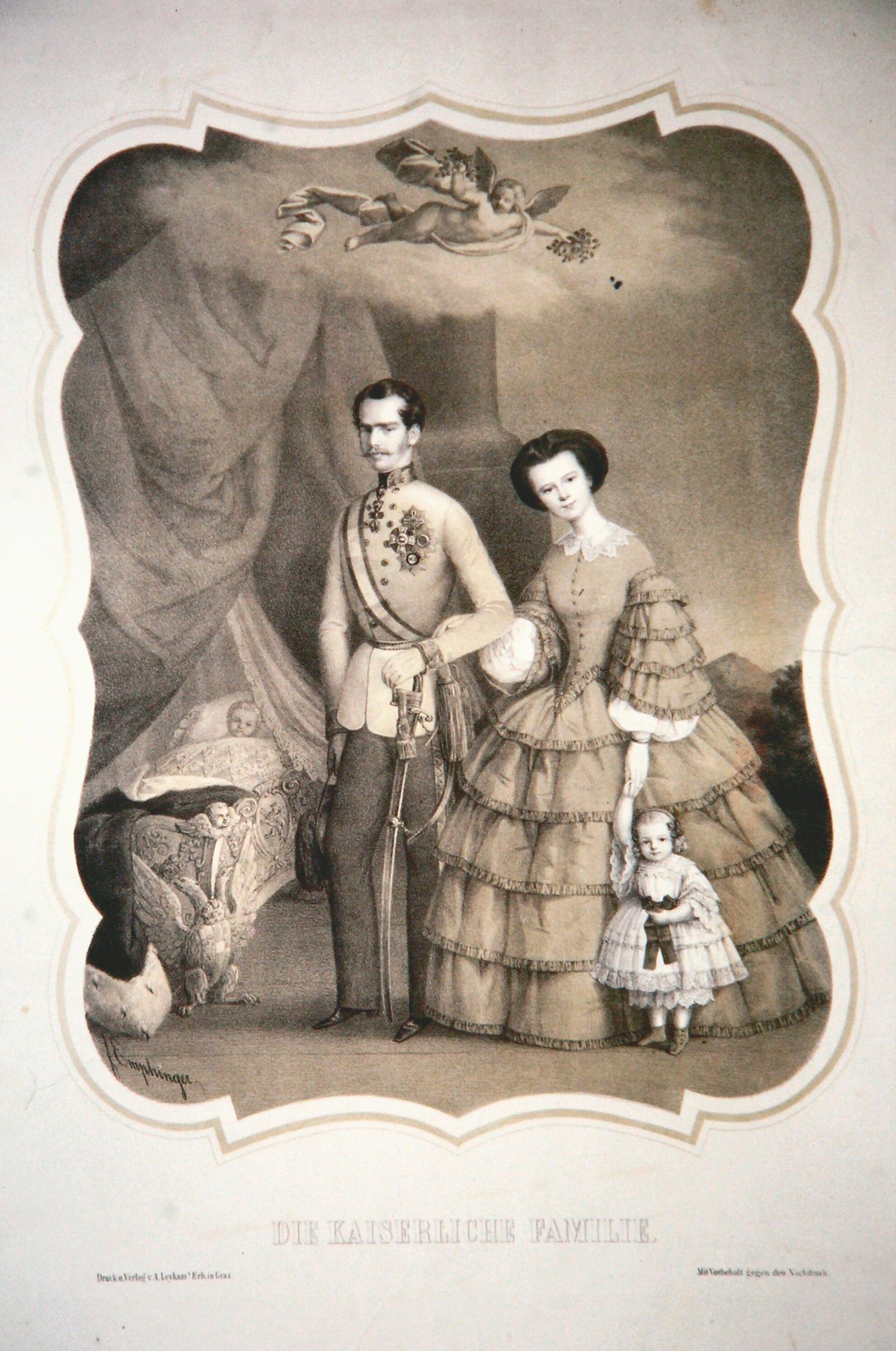
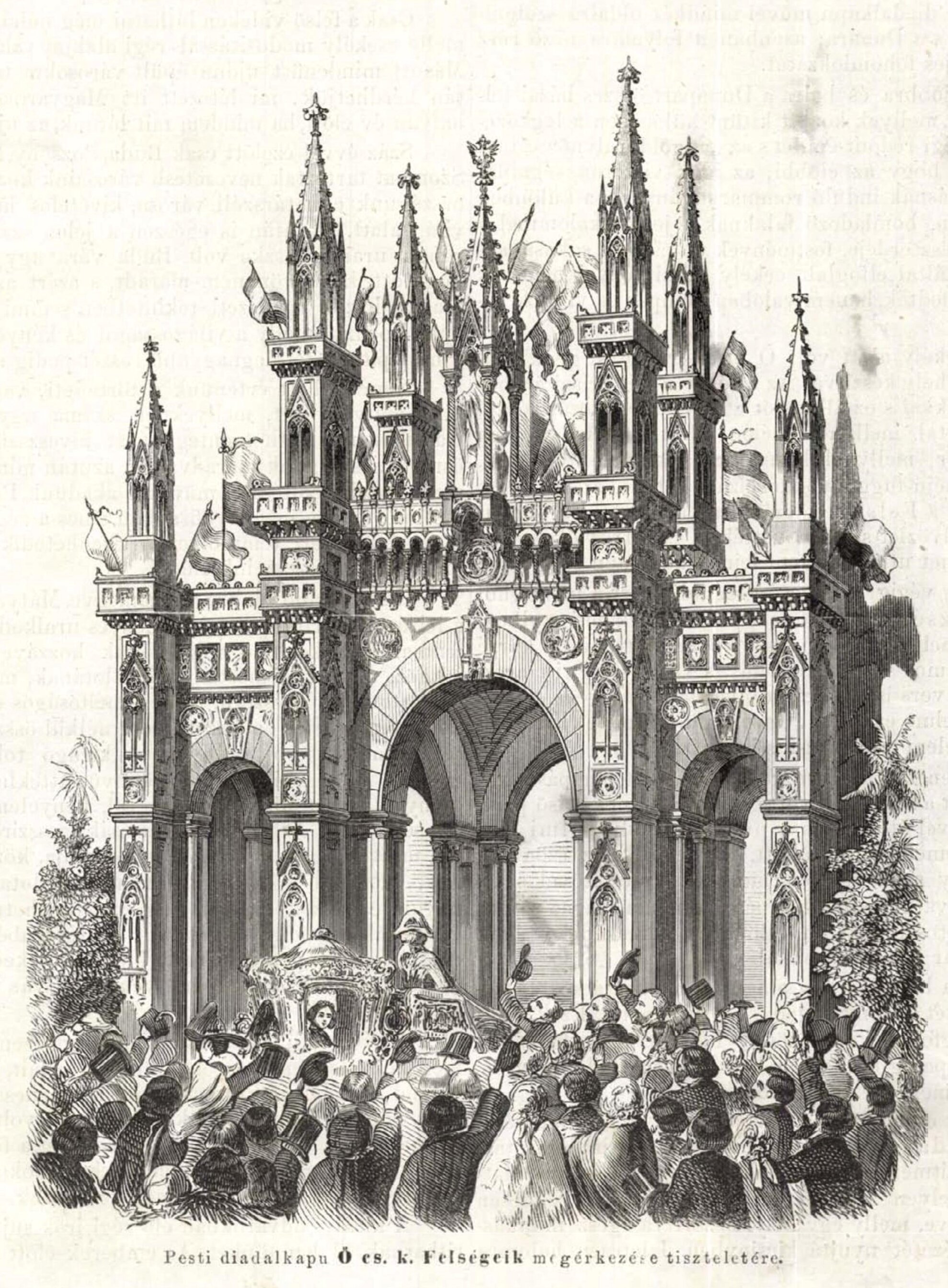
On the surface, however, the festivities went on calmly, a triumphal arch was built in honour of the imperial couple, and the town was given decorative lights by means of alcohol lamps. The names of the monarchs shone on the Pest side, fireworks from the Castle were set off as entertainment. However, the Great Market Hall, unlike in the case of all the other famous guests, was not visited, probably because there had yet been no trace of the building. Sisi and Franz Joseph arrived by steamship from Vienna, their first stop being Komárom. As part of the official trip, the emperor wanted to introduce his wife and daughters to the people. It was considered safer for the two little princesses, Sophie and Gisela, to follow their parents by train, but the girls fell seriously ill during the journey. The first visit of the imperial couple was thus cut short by tragedy, as the elder princess, Sophie, died shortly afterwards, and was transported from Buda to Vienna for her funeral.
Bringing romance into the Dutch couple’s life - Queen Juliana and Prince Bernhard
Our claim above is of course an exaggeration, but it should be noted that several Dutch rulers spent some lovely days in Budapest with their families. Queen Juliana, the grandmother of the current King, came straight to the city for her honeymoon. Her new husband Prince Bernhard drove the car from which she stepped out onto the pavement in front of Hotel Gellért, dressed in hiking clothes. The young couple checked in under a pseudonym, of course, but luckily the hotel was notified of their visit in time. The warning phone call came from the Palace Hotel in Lillafüred, where the lovers had lunch before setting off to Budapest. The staff of the Gellért was fascinated by the effortless charm and kindness of the young couple, who enjoyed relaxing in the spa and admiring the view, their visit being featured in the newsreels of the time.
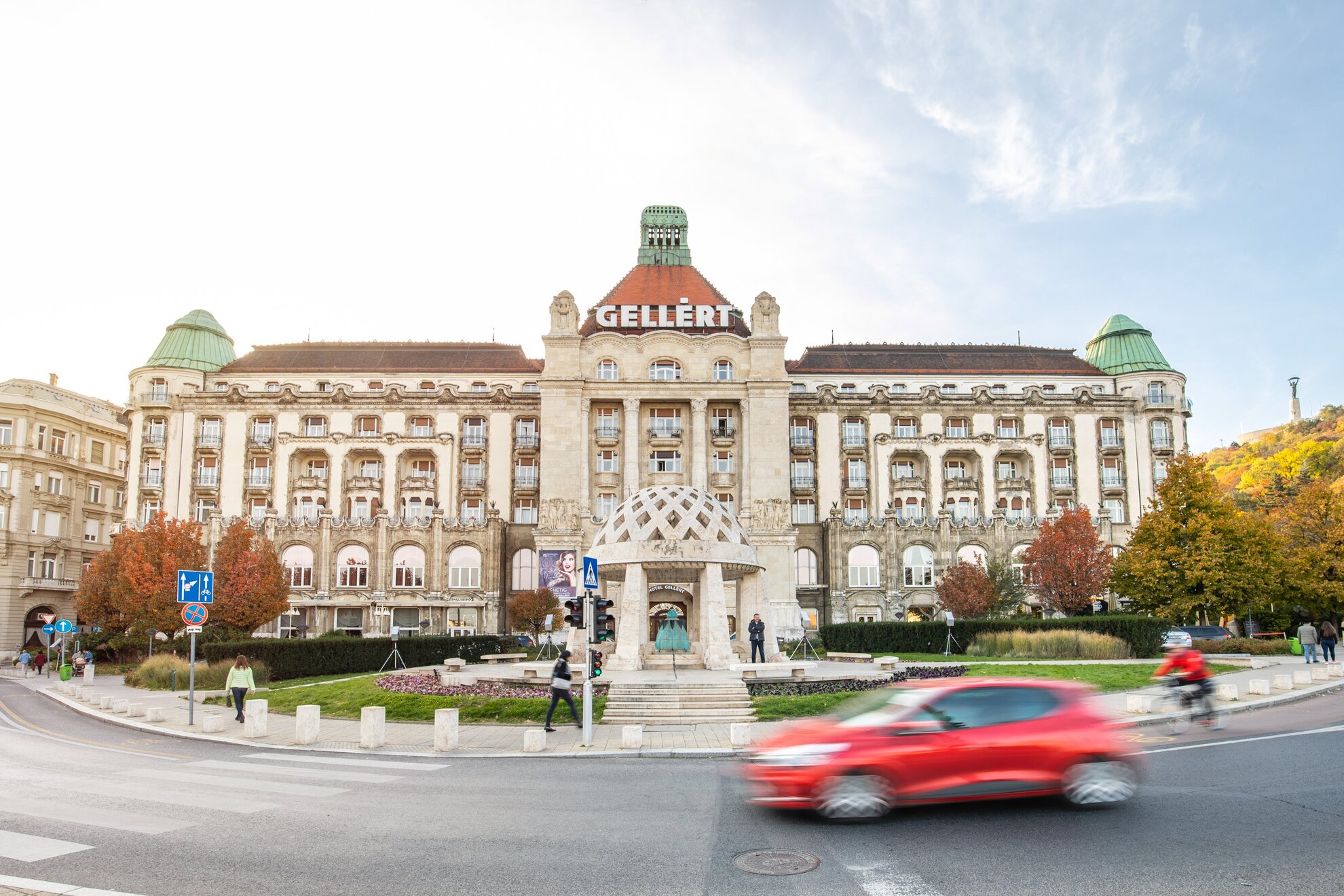
Interestingly, Queen Juliana's daughter Queen Beatrix also visited Hungary, in 1986, before the regime change. The popular monarch's marriage got off to a scandalous start: she followed her heart, which set on the German Prince Claus, who had previously fought in the Second World War. The Dutch did not take kindly to the fact that a former enemy soldier was to be the Queen's husband, but they eventually accepted and grew fond of Claus, thanks to his openness and his work in environmental protection.
Sources:
- Népszava, April 1990 (Vol. 118, No. 77–100)
- Pesti Hírlap, May 1993 (Vol. 2, No. 101-124)
- Utazások a múltban blog
- Menedzsment Fórum
- Glamour
- Nők Lapja Café
- Mandiner.hu
The cover photo is an illustration, it was not taken on the royal couple's visit to Budapest.
